A metal rod of length and mass is pivoted at one end. A thin disk of mass and radius () is attached at its centre to the free end of the rod. Consider two ways the disc is attached:
(Case ): The disc is not free to rotate about its centre and
(Case ): the disc is free to rotate about its centre.
The rod- disc system performs SHM in vertical plane after being released from the same displaced position. Which of the following statement(s) is (are) true?
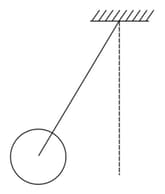


Important Questions on Simple Harmonic Motion
Consider the spring-mass system with the mass submerged in water as shown in the figure. The phase space diagram for one cycle of this system is,
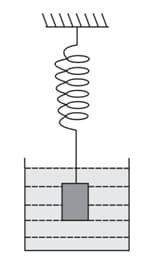
A small block is connected to one end of a massless spring of un-stretched length . The other end of the spring (see the figure) is fixed. The system lies on a horizontal frictionless surface. The block is stretched by and released from rest at . It then executes simple harmonic motion with angular frequency, . Simultaneously, at , a small pebble is projected with speed from point at an angle of as shown in the figure. The point is at a horizontal distance of from . If the pebble hits the block at , the value of is (take, ),
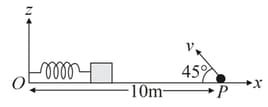
Two independent harmonic oscillators of equal masses oscillate about the origin with angular frequencies and and have total energies and , respectively. The variations of their momenta with positions are shown in figures. If and , then the correct equation(s) is (are),
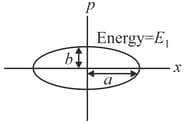
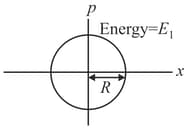
A block with mass is connected by a massless spring with stiffness constant to a rigid wall and moves without friction on a horizontal surface. The block oscillates with small amplitude about an equilibrium position. Consider two cases :
when the block is at ; and
when the block is at In both the cases, a particle with mass is softly placed on the block after which they stick to each other.
Which of the following statement(s) is(are) true about the motion after the mass is placed on the mass ?
A spring-block system is resting on a frictionless floor as shown in the figure. The spring constant is and the mass of the block is. Ignore the mass of the spring. Initially, the spring is in an un-stretched condition. Another block of mass moving with a speed of collides elastically with the first block. The collision is such that the block does not hit the wall. The distance, in metres, between the two blocks when the spring returns to its un-stretched position for the first time after the collision is ____.

